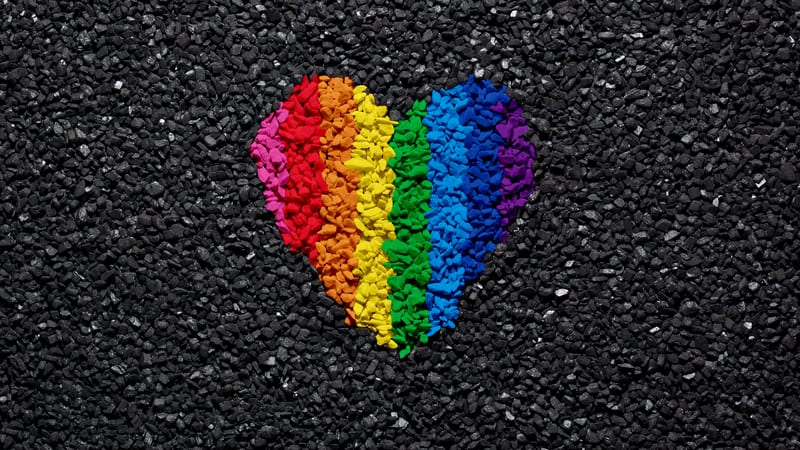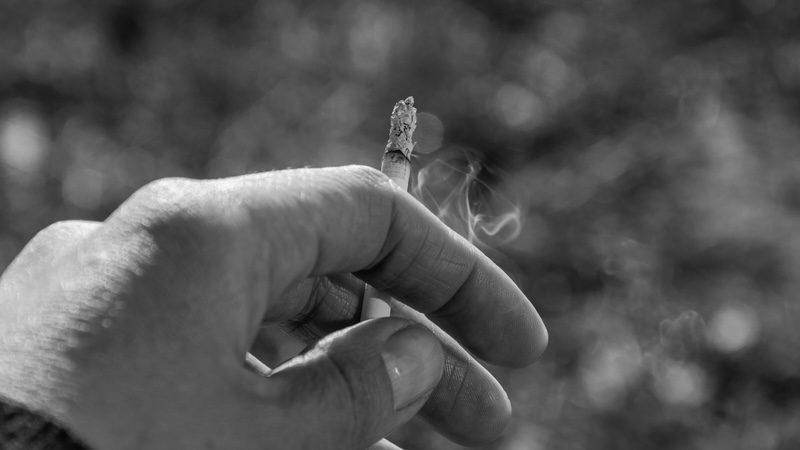Gender Identity: Why ‘They’ are ‘They’
The push for gender neutrality

Dr. Rosalind Gottfried, sociologist and retired college teacher, provides objective definitions for gender identity terminology as used in contemporary discourse. She is looking to interview grandparents, parents, and youths regarding gender identity and family relationships.
Is she a woman? Or a man?
Is he a woman or a man?
Does it matter?
What does it matter if a person is a woman or man? It has meaning because the culture assigns its meaning, but that may be changing. Many youths feel that such categories are not only meaningless but harmful, hurtful, and socially irrelevant. The forcible nature of the gender binary is seen as a dangerous weapon utilized against a vulnerable population which wishes to disassemble the concept of gender, in general, and a binary schema in particular.
Have you felt discomfort or awkward speaking with a person on indeterminate gender? Many people mentally squirm if they cannot determine if an individual is a “man” or a “woman.” It is distracting because we are thinking about it and anxious not to mistakenly utilize the wrong pronoun.
But what if we used gender neutral pronouns? Then there would be nothing to worry about, right? Not necessarily. This would resolve the language issue but, perhaps, not all of our discomfort. And what contributes to those feelings? Why do we feel a bit unnerved by the inability to “place” a person in a particular gender? And, is it gender or sex that we are responding to? These are not simple questions, and an explanation of the myriad elements would take a book. According to a report in Newsweek (3/3/2023), nearly 40% of GenZ’ers (currently 18-24) and 30% of millennials (generally defined as 1984-2002) identify as part of the LGBTQ community. Other sources have suggested the portion is significantly higher, up to 60%. (The ranges attributed to generations varies in different sources.)
Some baby boomers have shrugged their shoulders and said that they don’t “get” the need for calling their grandchildren “they.” They know that a failure to do so brings irritation to their adult children even if the designated grandchildren are less fazed by the omissions, and many of them are tolerant of mislabeling, shrugging and saying it is OK. They identify as gender neutral, reflecting the desire to eliminate the concepts of two genders. In fact, many assert that gender distinctions of any type are unnecessary and endanger a vulnerable population. The term gender has subsumed the category of sex; categories which were distinct for the boomer generation. Unlike in previous eras, the young people are increasingly likely to see biological sex as a cultural category, like gender roles, existing on a continuum. For some, the distinction between sex and gender is obsolete.
The first set of current terminology has to do with gender identity: how a person feels about themselves. The two most commonly utilized labels are Nonbinary and Genderqueer. These terms are very closely aligned but not synonymous. Nonbinary is an umbrella term encompassing persons who do not feel themselves to be one traditionally defined gender or the other, who feel themselves to incorporate much of each of the genders, or whose gender identity is not stable and who in any way resist the classification of the traditional gender roles of masculine and feminine aligned with the concept of man and woman. These people prefer to be referred to as “they” as it is a gender-neutral form of a pronoun that does, in fact, have a history of being used, in prior eras, as a singular pronoun. Other pronouns which have been utilized include: ze/hir/hirs; xe/xem/xirs (x pronounced z); fae/faer/faers.
Genderqueer is similar to nonbinary in its rejection of the gender binary and considered a more political term in that the individuals who refer to themselves as genderqueer are more actively resisting and challenging the culturally embedded binary categories of male and female, masculine and feminine. Genderqueer developed in activist circles and seeks to “queer” the concept of gender. Queer, originally a reference to any sexuality not conforming to heteronormative behaviors, adds a prefix of “gender” to queer to highlight an extension from the realm of sexuality to cultural associations. Because of this expansion of the nonbinary, the data listing nonbinary, in some research, refers only to sexuality while others are more inclusive.
The desire some people have to determine if a nonbinary person is a man or a woman misses the point; it does not matter. Some nonbinary persons do not recognize a biological distinction between man and woman, suggesting that these previously “objectively” assigned categories are social constructs. Still, other “nonbinary” persons will refer to themselves as male or female, but see that distinction as socially insignificant. This is very confusing for some of us since, in the 1960s-1990s second wave of feminism, there was a clear distinction elaborated between the conceptualizations of sex and gender. Today, gender incorporates both in the everyday lexicon. In both conceptualizations, the goal was full inclusion and guaranteed human rights.
Gender fluid is another term often utilized today. This identity is another form of the nonbinary and refers to a person whose gender is not consistent but changes with the situation, the persons in the interaction, or another condition such as mood. Although these persons will refer to their masculine and feminine selves, they are nonbinary because they do not think of gender in an either/or fixed way and they don’t think one sex has claim to a particular gender role; they challenge the use of fixed either/or conceptualizations. They believe they have aspects of both genders in them, any of which can be salient at any given time depending on the circumstances, internal and external.
Transman and transwoman are two other terms exhibiting complicated interpretations. A transman is a person who was assigned at birth to be a biological woman but who feels internally to be a man. These individuals can transition with more or less medical intervention but typically present as a male. Transwomen are experiencing the obverse; born a man they feel themselves to be a woman and will present as such. More traditionally gender-oriented people will ask “Are they a real man?” or “Are they a real woman?” The answer is yes for the transwoman or transman who does not have a nonbinary conceptualization because that is how they feel and how they choose to designate themselves; their original biological designation is not relevant.
There are a variety of flags for LGBTQ people to identify with, including the most common Rainbow Flag (LGBTQ) and the Transgender Flag.
Trans is a term that expands the binary transman or transwoman terms to suggest that woman and man exist on a continuum and some people may prefer to make some form of variation on woman and man while lacking any clear adherence to either woman or man. It does not constitute a change in identity from one sex to the other but as neither. Many of these people elect to be referred to with the pronoun of their new gender identity, though some will use “they,” as they choose a nonbinary identity.
Boomer columnist Kate Willoughby Hall on her transgender child
An intersex person is an individual whose apparent biological sex is unclear. Formerly referred to as hermaphrodites, that term had a limited understanding of the number of situations which could lead to ambiguity. There are multiple conditions having to do with genes, chromosomes, and hormonal levels that can create an appearance of mixed or ambiguous sex. In the past, the standard “wisdom” was to choose a sex for these babies and remake them accordingly. Today, the practice is seen as abusive and unnecessary as it is not imperative that a baby have a sex and it is more compassionate to let the person choose for themselves what path they take when they are ready to do so.
Sexuality, in the US, has been incorrectly intertwined with gender identity. Who a person is attracted to, sexually or romantically, is distinct from how they identify themselves with regard to gender. Any gender identity can be linked with any type of sexuality: gay, bi, lesbian, straight and more. The historical explanation for how this confusion occurs is too complicated to get into here, but suffice it to say that sexuality and gender identity are two separate aspects of human life. Most people are familiar with heterosexuality: sexual attraction to those persons who seem to be the sex other than oneself. Gay is attraction to someone identified as the same sex as oneself. Bisexual is a person whose sexuality is inclusive; it may at times be gay or straight or something else. Queer refers to a sexuality that challenges categorizations of sexuality and refers to people who do not follow traditional definitions of sexuality and commonly have nontraditional gender identities. Queer used to be a pejorative term for homosexual but has been appropriated by activists and redefined in a positive way. Homosexual is rarely used as it is a colonizing word in that it was used by the major institutions (medical, psychiatric, psychological, and legal) to make homosexuality illegal and pathological. Pansexual refers to a person who defines anyone as the potential object of desire or love regardless of their identifications. A pansexual person may be attracted to a “same” sex person, an “other” sex person, or a person who does not identify themselves by any sex. In the latter aspect, a pansexual person defines their sexuality beyond the categories of lesbian, gay, or bisexual. Asexual refers to a person who feels no sexual attraction to anyone, regardless of their sex or gender.
Now, a word about words. Many people have remarked that the utilization of they/them/their is difficult because it has been used as a plural pronoun and now it is being utilized for nonbinary and gender-neutral purposes. Though there have been other pronouns suggested to create gender inclusivity – the application of the pronoun to any human being – it seems that they/them/there is gaining the most traction. I have not seen any explanation as to why the others have not been more widely adopted, but I am going to guess that the fact that these third person terms are established pronouns helps to make these act as validating. Those who wish to use gender neutral pronouns do not want to be relegated to second class status; in fact, the whole purpose of making these changes is to promote freedom of expression, inclusion, and legitimacy.
Visit PFLAG for support and resources for LGBTQ+ people and their allies
The push for nonbinary identifications and language transformation is a reaction to what has been designated the heteronormative performative gender mandates. This refers to the socio-cultural assumption that people are heterosexual and adopt appropriate gender roles and holds this as the default option. In other words, if a person does not adhere to acting within the heterosexual and masculine/feminine paradigms then they are wrong, invalid, outcast, pathological, and a threat to the social order. Anti-LGBT+ sentiment runs deeply; in the first three months of 2022, according to NBC News, there were 238 anti-LGBTQ+ bills filed; in contrast, there were 41 such bills in 2018. The population is targeted and threatened and the costs are not just social; they present physical, medical, and psychological endangerment to those affected. The constitutional rights of the population in these classifications are in jeopardy.
Gender activists promote the establishment of full rights and protections of the law to promote full societal participation. Their demands can be seen as a civil rights movement to eliminate oppression and discrimination, regardless of chosen identities and sexualities. They suggest that the gender and sexualities schemas are just that – a social construct that serves to divide and alienate rather than include and incorporate. The goal is full humanity and human rights for all just as second-wave feminists sought.
Dr. Rosalind Gottfried is a sociologist and retired college teacher. She is looking to interview grandparents, parents, and youths regarding gender identity and family relationships. You can reach her at rgotmail@gmail.com.


